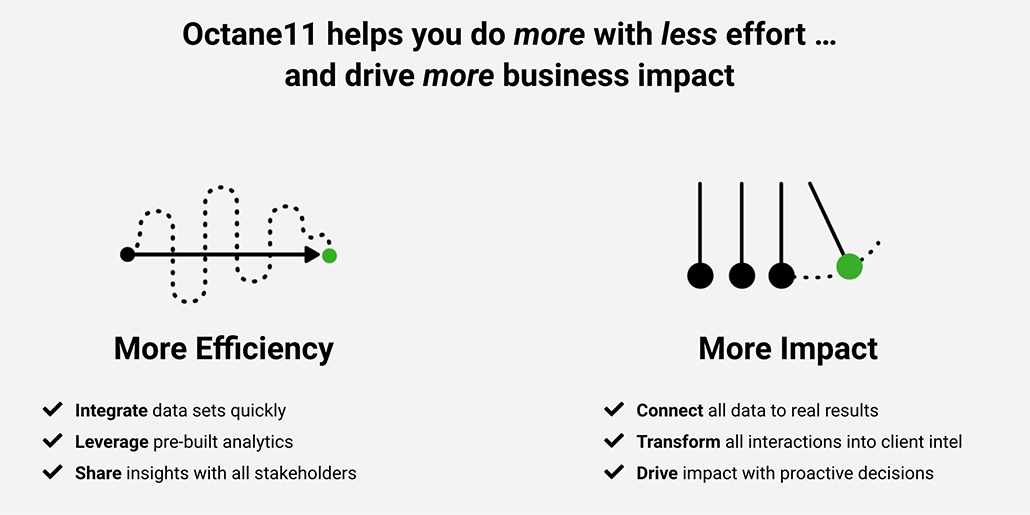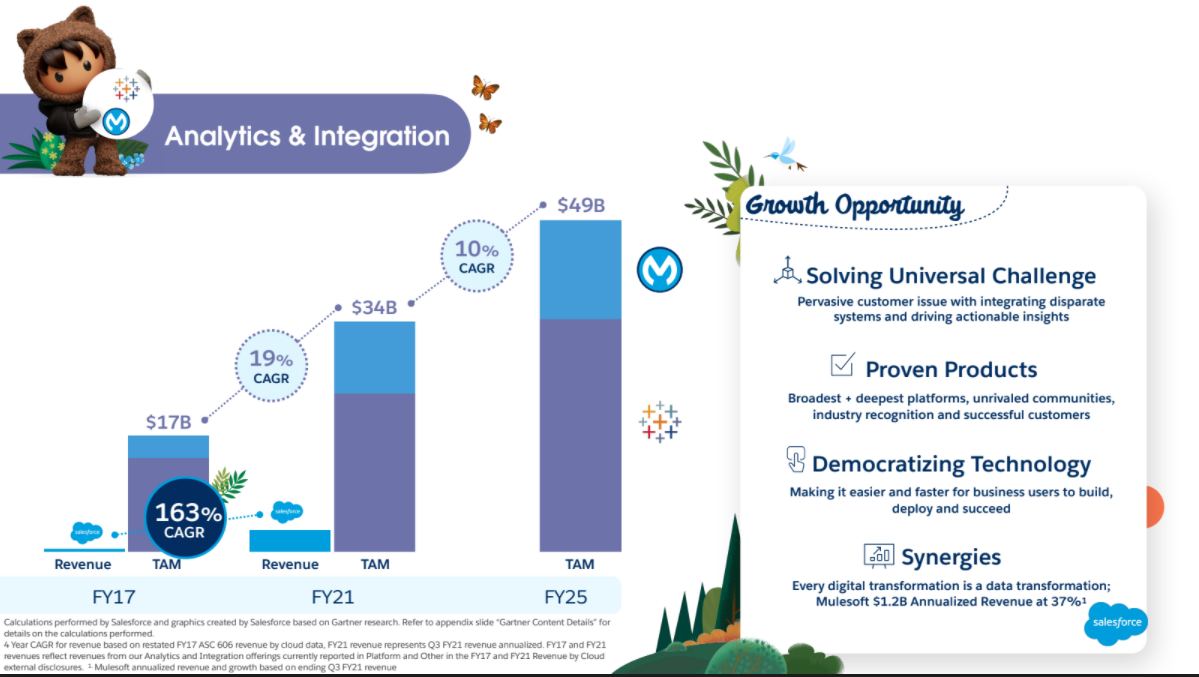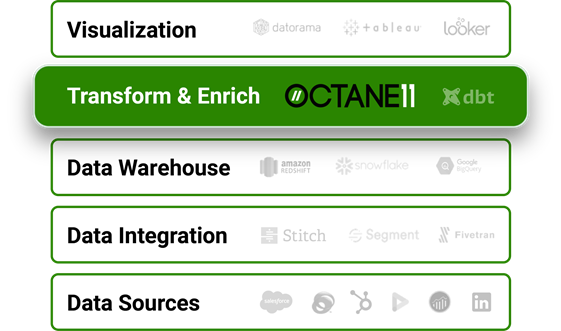

The benefits are tremendous, and hard to overstate. Multiple teams will be able to mine data that impacts multiple areas–sales, product development, service and marketing. Octane11’s customers are already enjoying faster reporting and execution time as well as smaller duration between the initial sales meeting and the close. In addition to the significantly reduced reporting times, their marketing teams are able to develop more varied creative concepts, and proceed from ideation to execution in less than half the time used to take.
The professionals can see and refine their marketing efforts for better, more actionable leads and stronger account engagement.The result is faster, more successful sales.
When you look at the potential market size, you find that there is tremendous future upside.
Some recent information from Salesforce shows a $34B TAM (Total Addressable Market) for Enterprise Analytics and Integrations (represented by Salesforce’s Datorama and Mulesoft business units), which is expected to grow to $49B in 2025.


CEO Dan Rosenberg has held, in equal measure, financial, marketing and entrepreneurial roles throughout his career. Prior to founding Octane11, Dan served as chief strategy officer and chief of marketing at MediaMath.
In that capacity, he felt firsthand the frustration and challenges associated with trying to manage many different marketing functions. He understands how difficult it can be to corral creative development and multimedia campaign planning, to execute and measure impact across today’s marketing channels – and to connect those activities to the goals of the rest of the organization.
That’s what led them to see the need for better ways to harness data for those who engage their customers across a broad range of tools and platforms.
Octane 11 basically offers B2B companies a simplified ‘translation layer’ that will quickly become a critical part of the software stack.
I believe that this is how software will connect in the future–linking everything together and facilitating the fastest and easiest ways to access the information needed to make decisions and adaptations based on incoming real-time data.
By simplifying the process and presenting the data in customizable ways, disparate teams of executives can share their insights. The data can then transcend individual functions to offer a holistic view of the campaign’s success.

